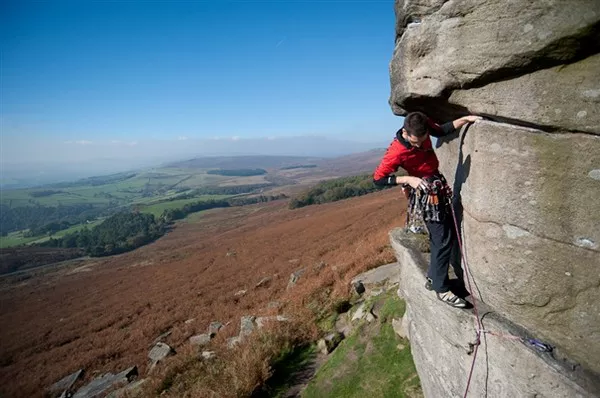In the exhilarating world of rock climbing, there are several styles and techniques that adventurers employ to conquer the vertical challenges nature presents. Trad climbing, short for traditional climbing, stands out as a method deeply rooted in history, requiring both skill and respect for the environment. This article delves into the essence of trad climbing, its techniques, gear, and the unique experience it offers to those who embrace its challenges.
The Essence of Trad Climbing
Trad climbing is a form of rock climbing where climbers place their own removable protection as they ascend. This method contrasts with sport climbing, where fixed bolts are pre-placed in the rock. The term “traditional” signifies the reliance on the climber’s ability to find suitable placements for gear—such as nuts, cams, and hexes—within natural features like cracks and fissures in the rock.
What sets trad climbing apart is the self-sufficiency and problem-solving it demands. Climbers must assess the rock, select appropriate protection, and execute placements effectively to ensure safety. The experience is as much about mastering technique as it is about understanding the rock’s contours and the intricacies of gear placement.
The Gear: A Symphony of Precision
Central to trad climbing is the specialized gear used by climbers. Unlike sport climbing, which relies heavily on pre-placed bolts, trad climbers carry a range of devices to protect against falls. Here’s a look at some essential trad climbing gear:
1. Nuts and Hexes: These are passive protection devices that wedge into constrictions or cracks in the rock.
2. Camming Devices (Cams): These spring-loaded devices expand to grip the rock when inserted into a crack.
3. Slings and Carabiners: Essential for connecting climbers to their protection points.
4. Climbing Rope: Dynamic ropes designed to stretch and absorb energy during a fall.
5. Climbing Harness: Provides support and safety by distributing the climber’s weight during a fall.
Each piece of gear serves a specific purpose and requires a keen understanding of the rock’s features to use effectively. Trad climbers often carry a diverse rack of gear, honed to match the challenges presented by different types of climbs.
Techniques and Tactics
Trad climbing demands a nuanced skill set beyond physical strength. Climbers must be adept at various techniques to ascend safely and efficiently:
1. Gear Placement: Knowing how and where to place protection is crucial. Proper placement ensures stability and reduces the risk of gear dislodging during a fall.
2. Crack Climbing: Traditionally protected climbs often feature cracks in the rock. Climbers use specialized techniques like hand jams, finger locks, and foot jams to ascend these routes.
3. Anchor Building: At the top of a climb, trad climbers construct anchors using available features like trees, boulders, or removable protection. This skill is vital for setting up belay stations and ensuring safety for subsequent climbers.
4. Route Finding: Unlike sport climbs with obvious bolted paths, trad climbers must navigate natural features to find the best route upward. This involves reading the rock and making strategic decisions.
The Trad Climbing Experience
Beyond the technical aspects, trad climbing offers a profound connection with the natural environment. Climbers often seek out remote and pristine locations, where the challenges of the climb are matched by the beauty of the surroundings. The discipline fosters a deep appreciation for nature and requires climbers to leave minimal impact on fragile ecosystems.
Trad climbing also fosters camaraderie and trust among climbers. Partners work closely, relying on each other for safety and support. Communication is key, especially during complex maneuvers or challenging sections of a climb.
Safety and Risk Management
Trad climbing, like all forms of climbing, carries inherent risks. Climbers must be vigilant about safety protocols, including:
- Fall Factors: Understanding the potential consequences of a fall based on the length of rope in use and the placement of protection.
- Anchoring: Building secure anchors at belay stations and rappel points is critical for safety.
- Gear Inspection: Regularly inspecting gear for signs of wear and tear to ensure reliability during a climb.
- Weather and Conditions: Being aware of changing weather conditions and their impact on the climb is essential.
Climbers often undergo rigorous training in safety procedures and emergency response to mitigate risks effectively.
Conclusion
Trad climbing embodies the spirit of adventure, self-reliance, and respect for the natural world. It challenges climbers both physically and mentally, rewarding them with breathtaking views and a sense of accomplishment. For those who embrace its traditions and techniques, trad climbing offers an unparalleled journey into the heart of vertical landscapes, where every ascent is a testament to skill, courage, and reverence for the rock.

